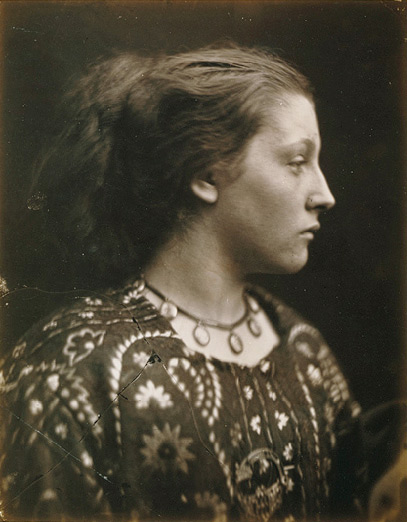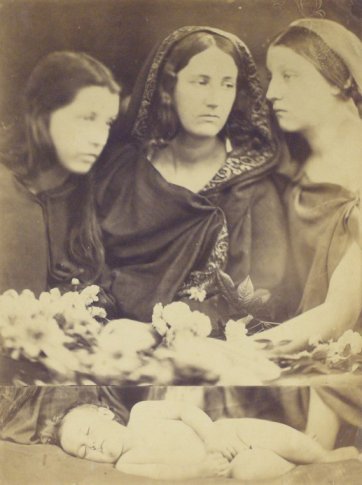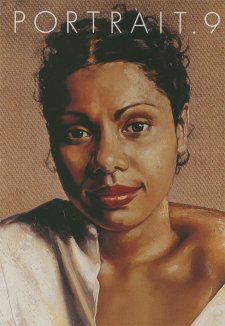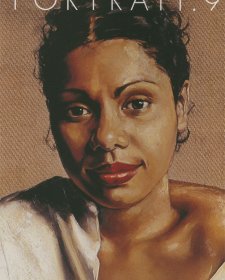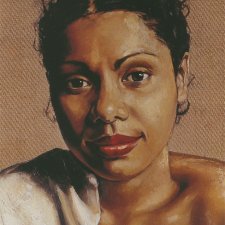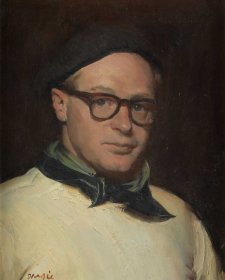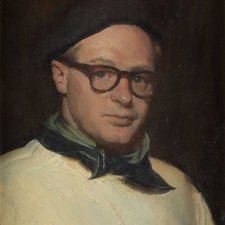The Photography collection at the V&A is the National Collection of the Art of Photography in the United Kingdom. Started in 1856, the same year the institution (then known as the South Kensington Museum) was founded by Sir Henry Cole, the collection now numbers over 300 000 items spanning early daguerreotypes and experiments in printing by William Henry Fox Talbot, to contemporary photographs international in scope.
In May this year a new photography gallery was opened showcasing a changing selection of works from the collection. The space also allows for separate focus or 'boutique' displays, the first of which is an exhibition of seascapes by nineteenth century photographer Gustave le Gray. At least once a year a major photographic show is mounted in the V&A's temporary exhibition spaces, currently the first museum retrospective of the work of 70s French fashion photographer Guy Bourdin.
During my internship I worked in the Research Department which is a composite section allowing staff of the V&A or external affiliated scholars, dedicated time and space to concentrate on producing a book, exhibition, or in my case, website for the Museum. My main task was to create a website about the photography of Julia Margaret Cameron, the first in a series of micro sites exploring the V&A's holdings of photographs by individual artists.
Julia Margaret Cameron remains to this day one of the most important and daring figures in the history of photography. The 'out of focus' look of her images, the way she manipulated her negatives and even the physical size of her prints challenged aesthetic and technical conventions of photography of her time.
She believed passionately in the expressive power of photography. She was first a picture maker and artist, unafraid of experimentation or failure in pursuit of her vision, but also an exuberant personality and an ambitious and clever business-woman who strove to make money from her success.
Cameron was born in 1815 in India of French (her mother's side) and British (her father's side) descent. She was educated in France and returned to India in 1834. She married Charles Cameron in 1838. The Camerons lived in Calcutta until 1848, Charles an important figure in colonial law and education reform, Julia busy as a mother and hostess. After Charles Cameron's retirement the family returned to England.
Though not in possession of her own camera until 1863, Cameron knew of the photographic process as early as 1842 when her friend the famous scientist and astronomer (and later subject of one of her best-known portraits) Sir John Herschel sent her examples of experiments in the field. Later establishing the family home Dimbola at Freshwater on the Isle of Wight (she was the neighbour and close friend of poet Laureate Alfred Lord Tennyson) she met photographers including Reginald Southey, Charles Dodson (Lewis Carrol) and Oscar Gustav Rejlander, sat for portraits, printed negatives, assembled albums and probably collaborated with Rejlander on setting up group tableaux and compositions. She did not start 'taking' her own photographs until the age of 48 when she was given her first camera as a Christmas present from her daughter Julie and son in law Norman, arriving at her self proclaimed 'first success' in January 1864.
Cameron is probably best known as a portrait photographer particularly for her series of large-scale head studies later coined 'famous men and fair women' produced from 1866 after the purchase of her second camera which held 15" x 12" glass plate negatives. She is also well known for her photographs in which she cast, costumed and posed visitors, children, family and often her domestic help at Dimbola to represent biblical types or enact literary narratives. Less well known is her experimental dismissal of conventional commercial approaches to making photographs. Though heavily criticised in her own time Cameron favoured and often, as she described it - purposefully stopped short of a sharp focus in her portraits to create an effect of 'roundness and fullness of force and feature'. She seamed separate negatives together to make composite prints, and thought nothing of drawing, scratching, and cutting a print or negative to compensate for technical deficiencies or to achieve a particular pictorial result. This aspect of experimentation in her working process is particularly well represented in the collection of her photographs held by the V&A. So for example we see in Sappho a striking profile portrait of Mary Hillier, a house maid at Dimbola as the Greek poetess Sappho, that although a large crack is evident in the bottom left hand side of the glass plate, Cameron continued producing prints from the damaged negative, indicating that she felt the image was a success.
The Victoria & Albert Museum has a particularly interesting and close relationship with the life and work of Julia Margaret Cameron. The museum was the first public institution to purchase a group of her works, Henry Cole paying 22.4s.4d for 80 photographs in August 1865 which Cameron supplemented with a gift of a further 34 prints later the same year. The Photography Collection now contains over 250 of her works acquired through subsequent gift and purchase.
Cole was Cameron's friend and an important early supporter of her work. In May 1865 he sat for a portrait by her at Little Holland House, the residence of her sister Sarah Prinsep and a lively Salon where Cameron kept company and exchanged ideas with many important artists and writers of the time as well as conducting portrait sittings. The two maintained correspondence and Cole even arranged for Cameron to use rooms at the V&A as a photographic studio.
The Julia Margaret Cameron micro site contains transcripts of letters between Cameron and Cole held by the National Art Library, biographical information, a selection of highlighted works, information on Mrs Cameron's working methods, a bibliography and links to other Cameron sites.
